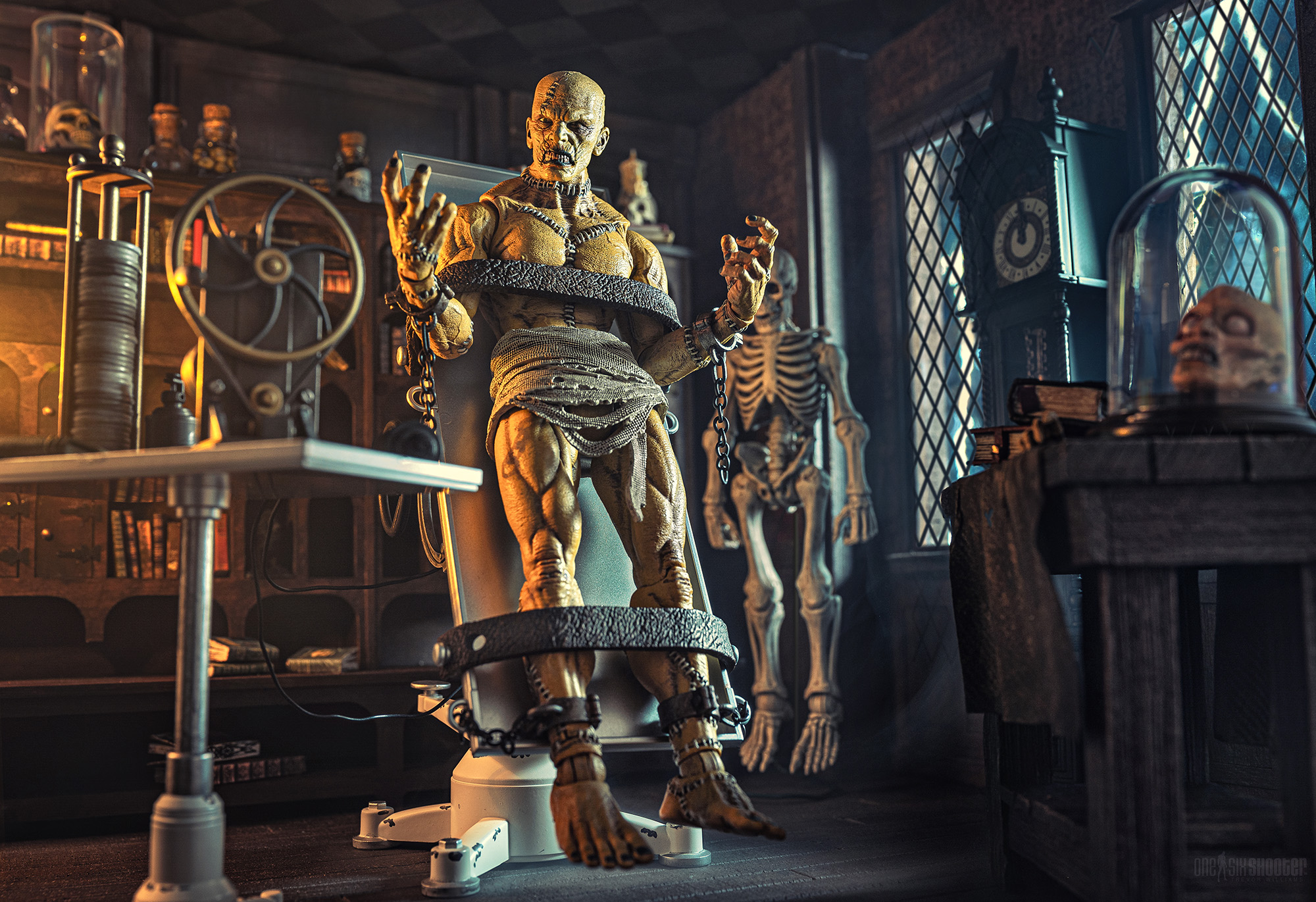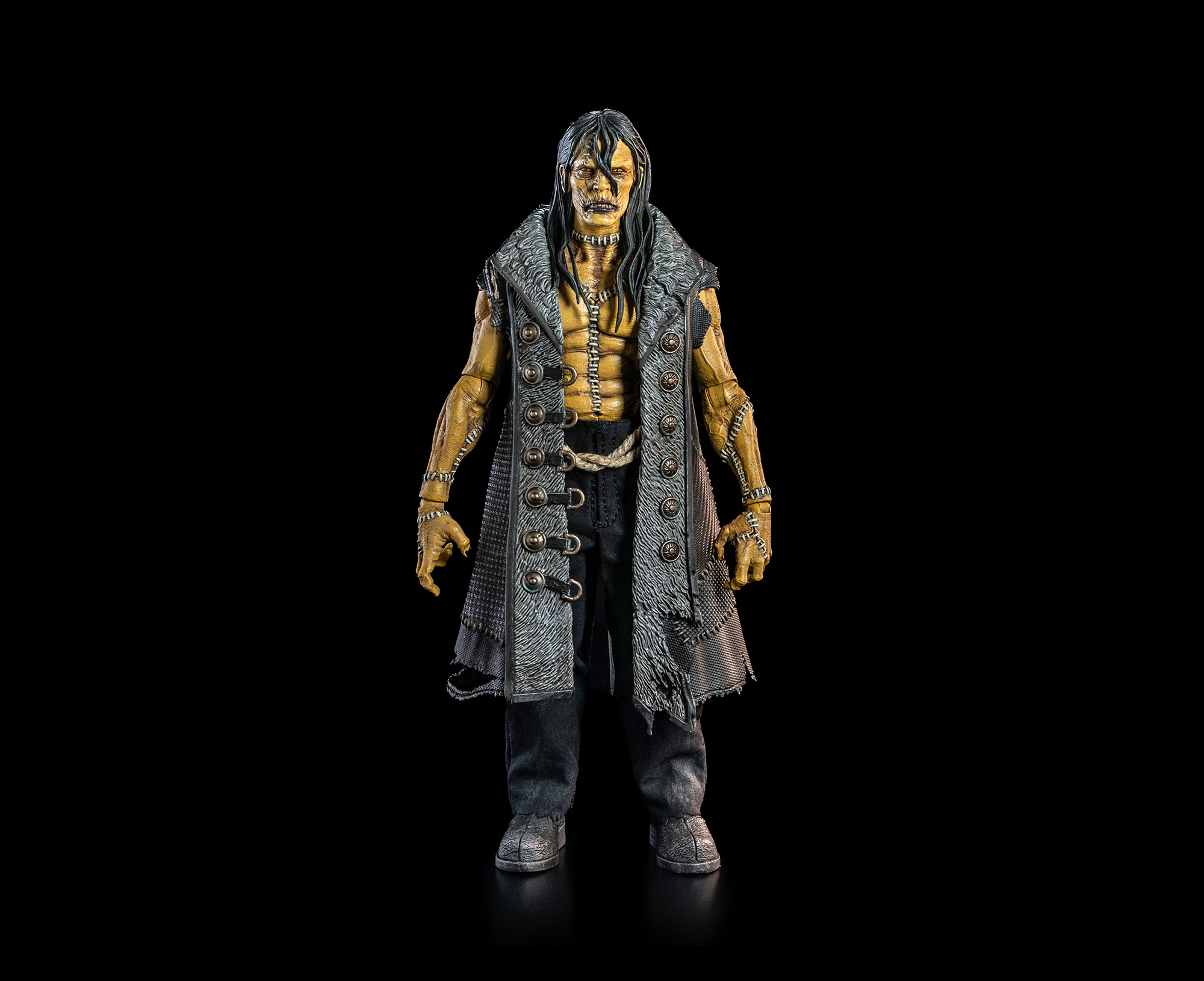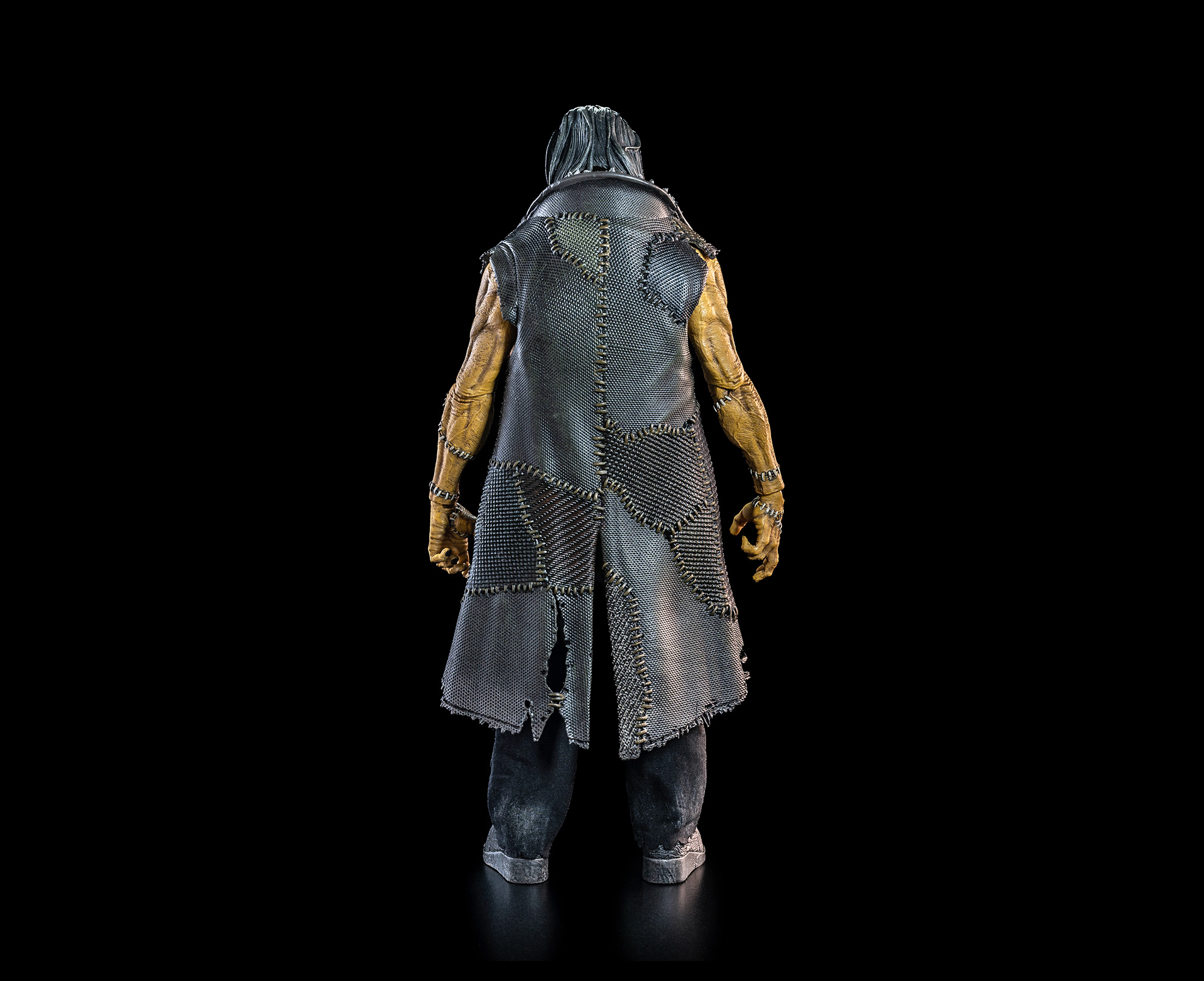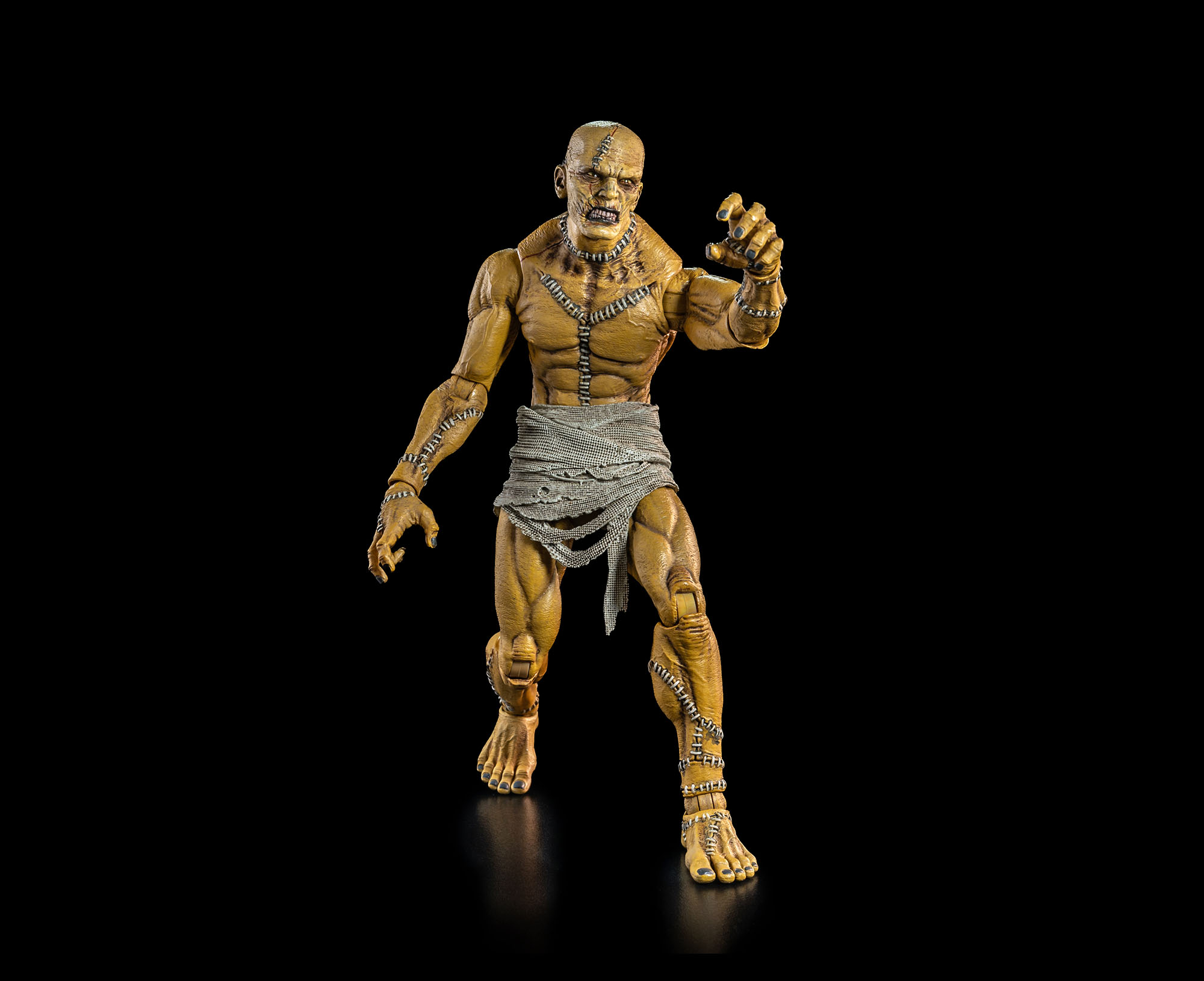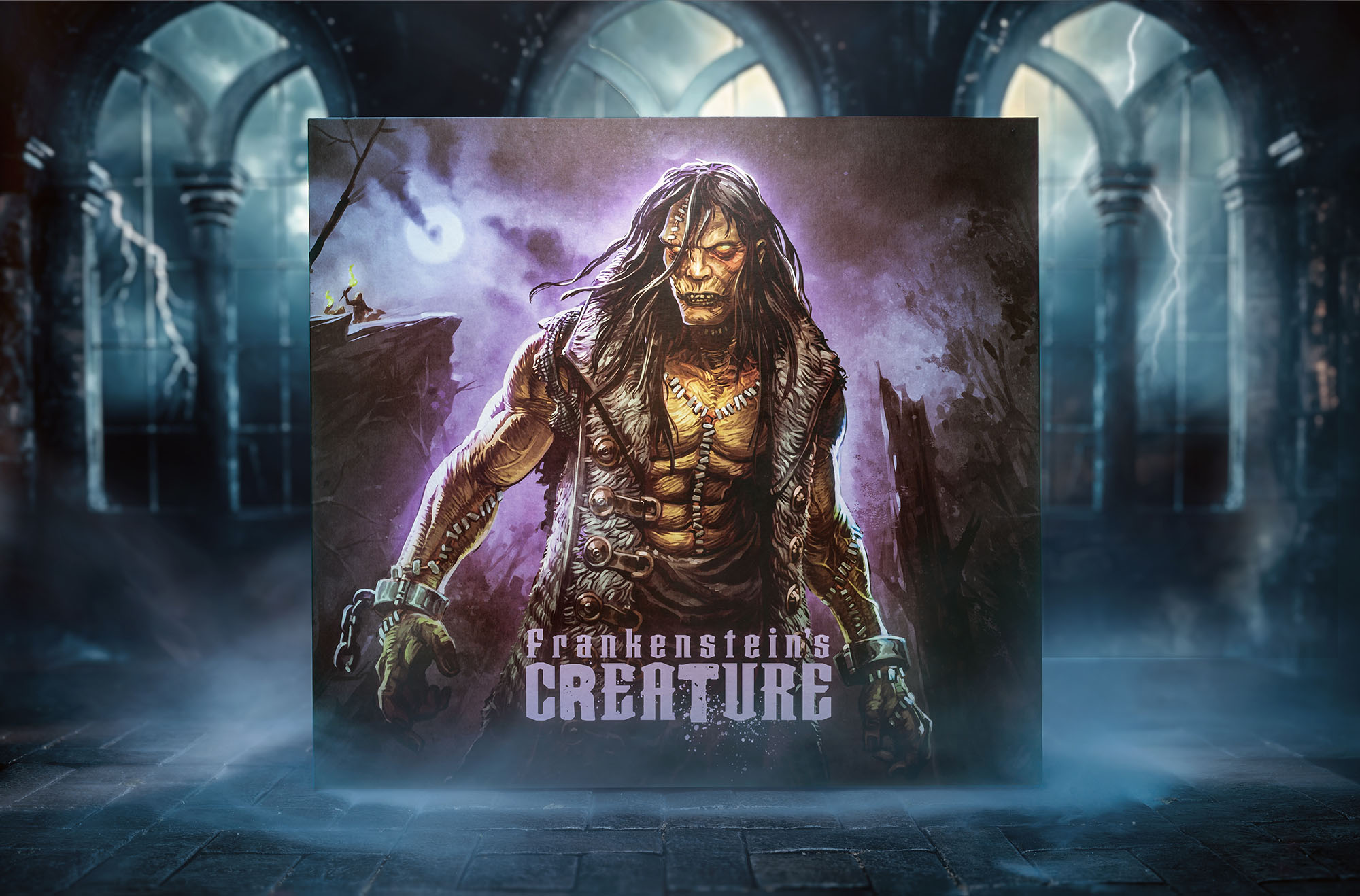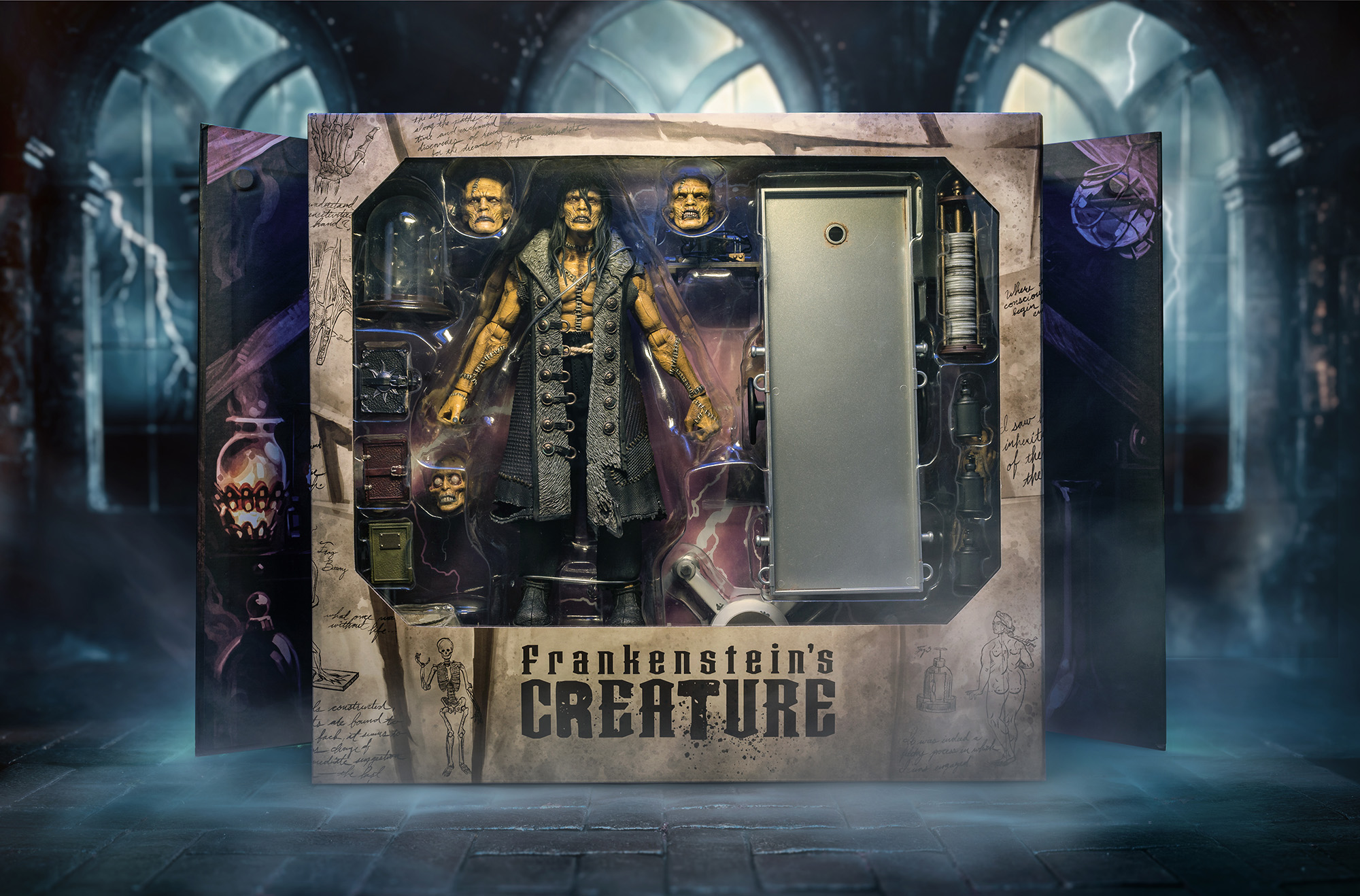The Creation of the Creature
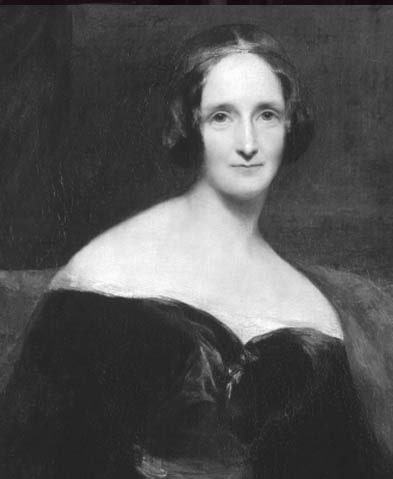
One of the most well-known stories in popular literature, “Frankenstein; or The Modern Prometheus” was first published on New Year’s Day in 1818. Initially published anonymously, and assumed to be the work of a man, this important novel was eventually attributed to the English novelist, Mary Shelley.
Begun as an entry in a contest amongst friends to see who could write the best ghost story, Mary Shelley was only 18 years old when she started this tale. The first edition of “Frankenstein” would be published two years later, while Mary Shelley’s name would first appear on the book’s second edition in 1821.
Like the creature at the center of this story, “Frankenstein” is a commonly misunderstood tale, in part due to the numerous versions it has inspired over the years. In the original novel, Dr. Victor Frankenstein’s creation is intelligent, articulate, and persuasive – a far cry from the shambling, incoherent monster commonly seen in many adaptations.
The appearance of Frankenstein’s creature is also much different from the book to its many subsequent versions. While Hollywood has popularized the image of a lumbering, green-skinned monster, the book’s original text painted a much different picture of the creature. Described as 8-feet tall, the hideously ugly creation had translucent yellowish skin pulled so tightly over the body that the workings of the arteries and muscles underneath that skin could clearly be seen. The creature was also written to have watery eyes, flowing black hair, black lips, and bright white teeth. The Figura Obscura version of Frankenstein’s Creature pays homage to Mary Shelley’s original description of her most famous creation.

The Story
While most people are familiar with “Frankenstein” through variations of the story that have been told over years, far fewer have read the original novel or know what actually happens in Mary Shelley’s book versus what has been created for Hollywood. A summary of the original book’s story is below:
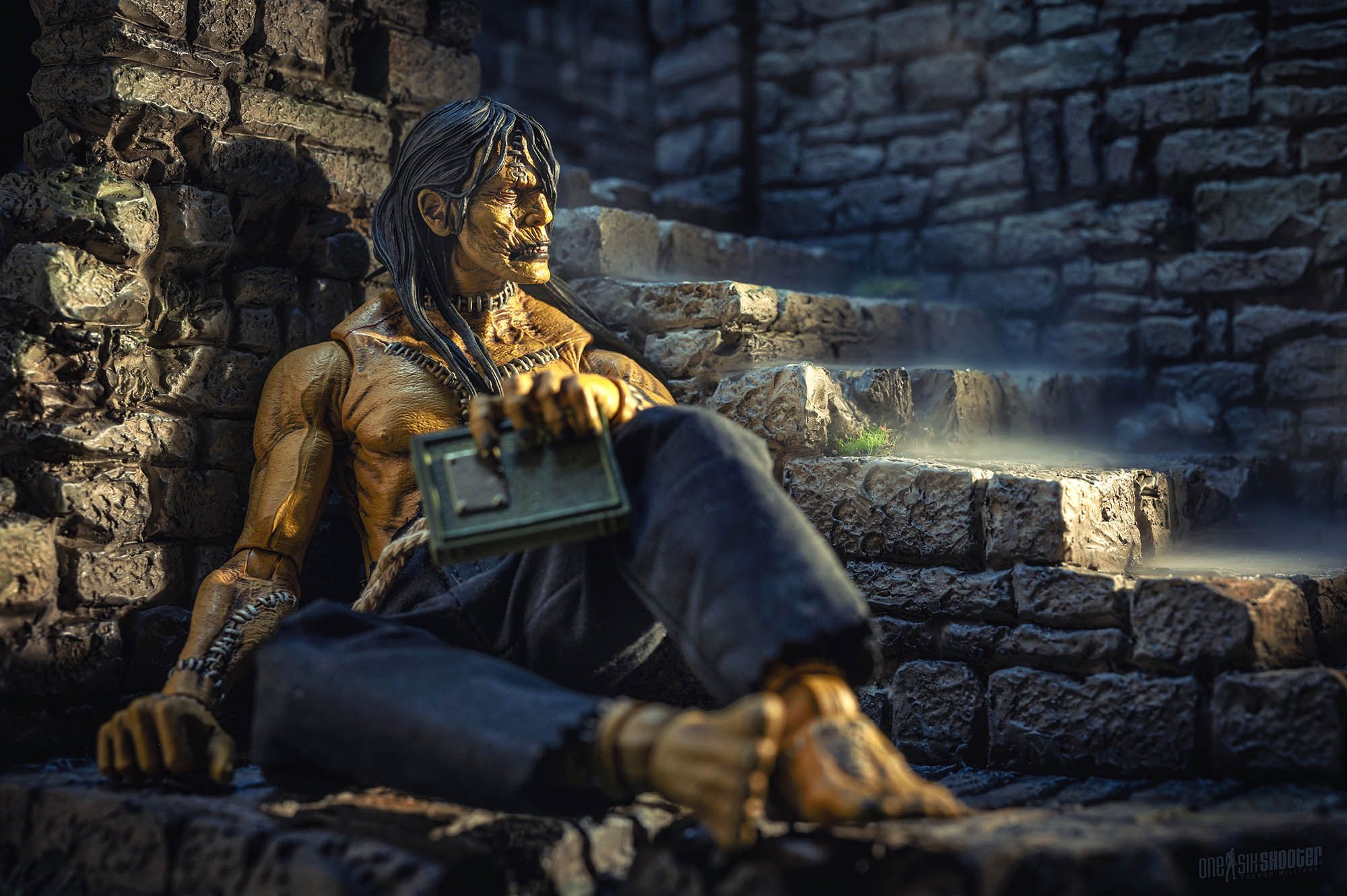
Dr. Victor Frankenstein is a brilliant, but misguided man consumed by the desire to unlock the secrets of life. Building a creature out of body parts from corpses which he collects from gravesites, Victor achieves his dream and brings his monstrosity to life. Rather than being delighted at his success, Dr. Frankenstein is horrified by the creature he has constructed, and he immediately flees from the sight of this monster.
Alone and unwanted, Frankenstein’s Creature escapes into the wilderness. Forced to learn the ways of the world on his own, the Creature is met with fear as he encounters humans for the first time. Chased away by their terror of him, the Creature moves from place to place until he stumbles upon a remote hut inhabited by a blind man and his two children. Observing this family from afar, the Creature learns to speak and he begins to understand the importance of belonging and family. This realization only serves to increase the sense of isolation that Dr. Frankenstein’s creation feels, and he is eventually chased away from the hut when the man’s children behold the monster who has invaded their home.
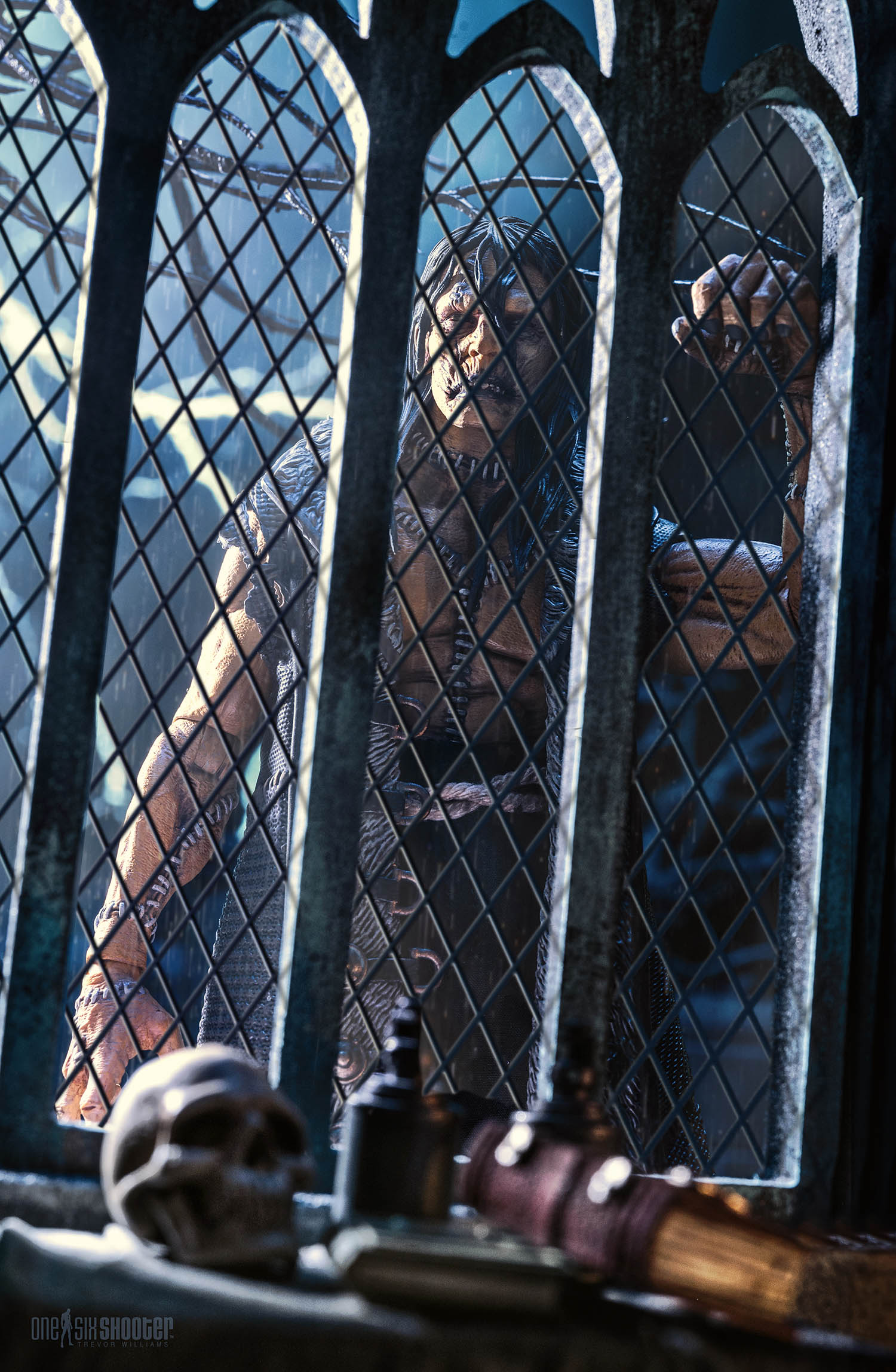
The Creature seeks out Dr. Frankenstein at his family home in Geneva. He demands that the Doctor create another creature so that he may have a companion in this life. Reluctant to repeat his past mistakes, the Doctor initially refuses, but the Creature persists in his demands. Eventually Frankenstein succumbs to these demands and begins to build a second creature.
On the brink of successfully creating life for a second time, Dr. Frankenstein realizes that he cannot go through with the deed. He destroys his new creation, enraging the Creature who vows revenge against his cruel creator.
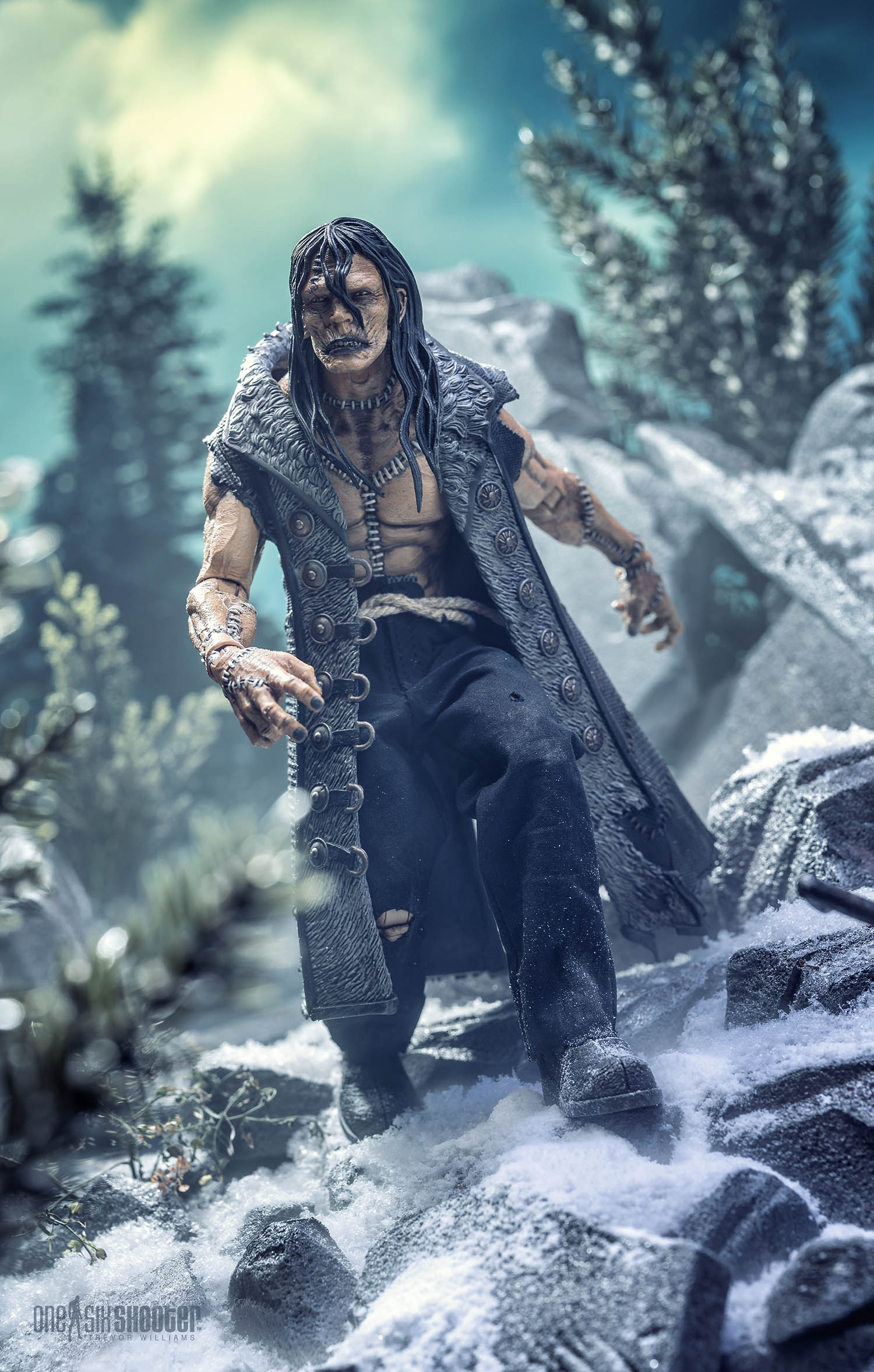
Thus begins a series of horrific events; the deadly consequences of Dr. Victor Frankenstein’s unchecked ambitions. Lashing out against the man who made him and left him alone, the Creature kills the doctor’s best friend as well as Victor’s wife, losses which also contribute to the death of Dr. Frankenstein’s father. Grief-stricken and now as alone as the Creature to which he gave life, Victor devotes his remaining time on Earth to hunting down his creation so that he may destroy the monstrosity he has brought into the world.
Dr. Frankenstein chases the monster to the northernmost parts of the globe, nearly catching him during a harrowing dogsled chase. Eventually discovered by a ship and a team of explorers seeking out the North Pole, a sickly Victor relates his grim tale before he finally succumbs to the illness he has been fighting and dies.
The captain of the ship, a man named Robert Walton, authors a series of letters relating the incredible tale that has been told to him by the doctor, he also includes his own encounter with the Creature. Finding the monster weeping over the dead body of his creator, he listens to the monster’s tale of solitude, suffering, and hatred, as well as the regret he now has for his actions. With his creator now dead, he is truly alone in the world. The Creature escapes into the icy North to die, never to be seen again.
Versions of the Monster
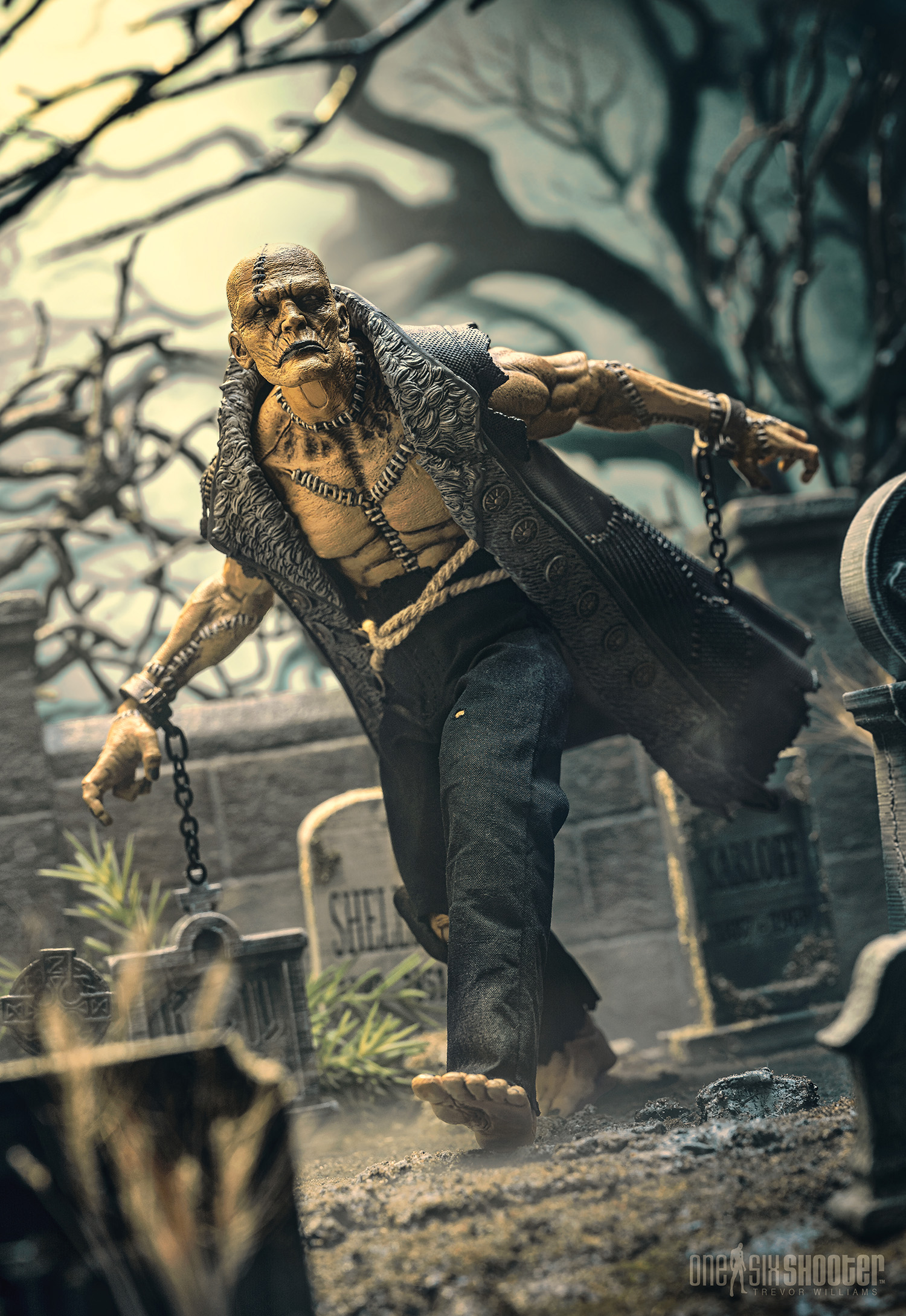
As mentioned previously in this article, the character of “Frankenstein”, as the Creature is often mistakenly called, has been adapted and changed many times since the 1818 publication of Mary Shelley’s novel.
The first film adaptation of this story was made in 1910. It is a brief film, running only 16 minutes, and in this version the origin of the Creature is changed to having been created in a vat. This version was thought lost for many years before surfacing in a private collection in 1980.
While a few other versions followed the 1910 short film, probably the most well-known adaptation was released in 1931 by Universal Pictures. Titled “Frankenstein”, it was the first non-silent version of the story and it starred Boris Karloff as the Creature. It spawned a number of sequels, including “The Bride of Frankenstein” in 1933 and “The Son of Frankenstein” in 1939, both of which also featured Karloff as the Creature. Later Universal films included B-movie efforts as well as comedies like “Abbott and Costello Meet Frankenstein”.
In Great Britain, a series by Hammer Films also mined the depths of Mary Shelley’s story for content, creating a number of Frankenstein films that featured actors such as Christopher Lee, Peter Cushing, and David Prowse, creating an interesting connnection between these films and the Star Wars universe that would follow some years later.
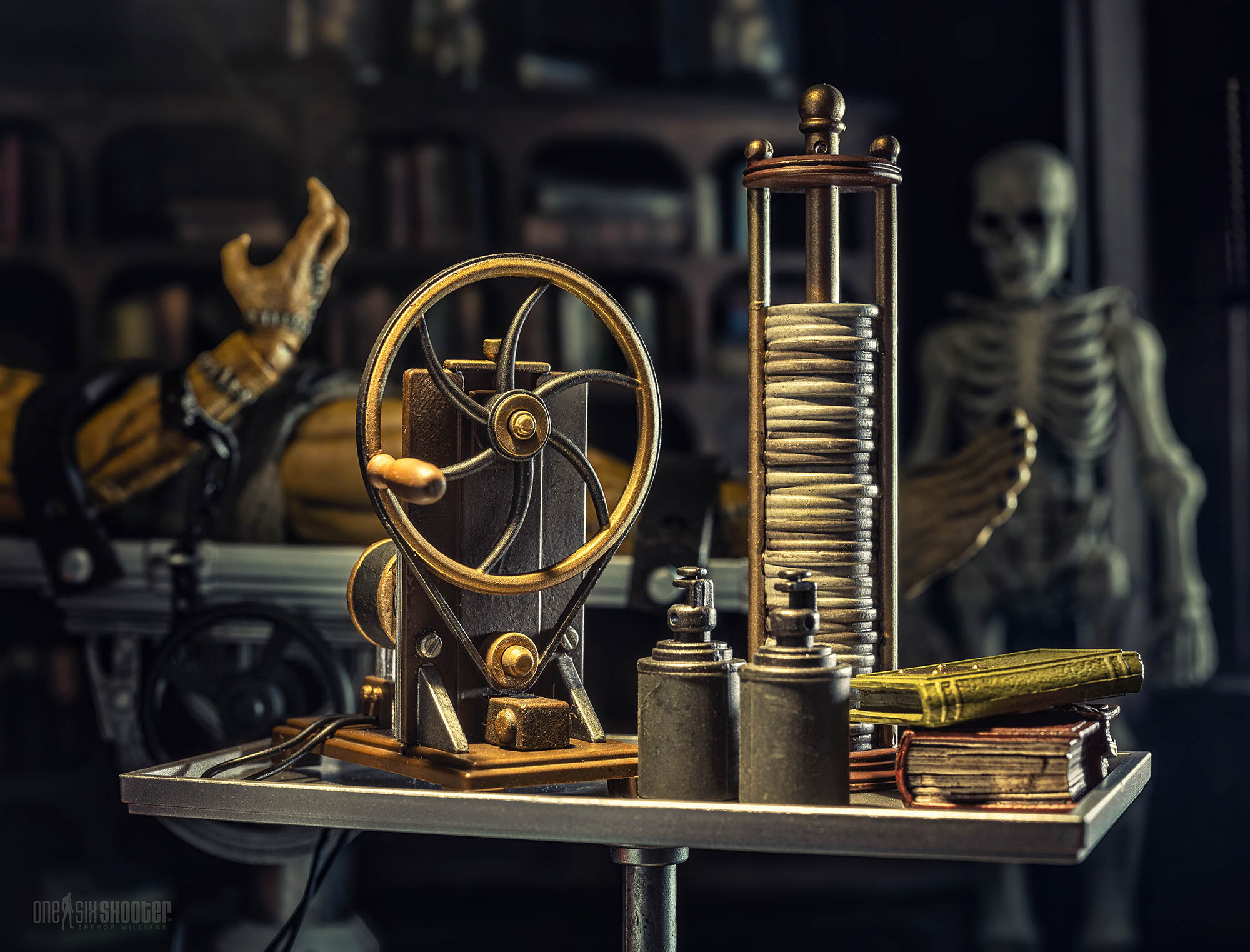
Over the years, the story elements and characters of Frankenstein have been used on screen in numerous ways. From beloved comedies like Tim Burton’s “Frankenweenie” or Mel Brooks’ “Young Frankenstein” with Gene Wilder to appearances alongside other “monsters” in movies like “Hotel Transylvania” or “The Monster Squad”. There have also been numerous retellings and reimagings, some notable ones which include 1985’s “The Bride” with Clancy Brown and Sting or “Mary Shelley’s Frankenstein” with Robert DeNiro in the role of the Creature or even the John Hughes classic 1980s film "Weird Science" with Kelly LeBrock as undoubtedly the most attractive "Creature" to date.
Beyond these movies adaptations, the general idea and design elements of Dr. Frankenstein’s reanimated creation have been used as the basis for other characters in popular culture such as Herman Munster from the Munsters, Lurch from The Adams Family, Sally from The Nightmare Before Christmas, or even the cereal-loving Frankenberry from General Mills.
The number of variations of Frankenstein’s Creature that have appeared across media since the book’s publication is extensive, and this recap is simply a glance at some notable examples. For a more complete list of these versions and appearances, see here.
The Creature Comes to Figura Obscura
As one of the world’s most popular and well-known “monsters”, the Creature was an early addition to the list of possible candidates to receive the Figura Obscura treatment. Interestingly, this would not be the first time that Eric Treadaway tackled this character, as the “Frankenstein’s Monster” and “Dr. Frankenstein” sets from the McFarlane Monsters series in 1997-98 were both sculpted by Eric (you may even find his likeness on that version of the demented Doctor).
When Eric began planning out the Figura Obscura: Frankenstein’s Creature figure, he knew immediately that he wanted to focus on the original literary description rather than the one popularized since. In the book, the Creature is described as having “yellow skin scarcely covering the work of muscles and arteries beneath”, as opposed to the green skin that is more commonly associated with the character today. The Creature is also written to have ”lustrous black and flowing” hair instead of the flat-top head created by Universal Studios for their version. You can clearly see these literary design choices in the figure that was created.
Another interesting note that Eric discovered during his research into this figure concerned the timeframe when the story was written. Metal surgical staples, an element which is quite often found on versions of Frankenstein’s Creature, would not have been around during the early 1800s when this work was written. Those staples were used beginning in 1908, nearly a century after the creation of this story and character. Back in the early 1800s, catgut and other sutures made from natural materials would have been used, and so Eric made sure to include those in the design of his Creature rather than the staples or neck bolts often seen today.
There are a few distinct looks for the Creature in the story of Frankenstein – including how he appears when he is first created and also his clothed look later in the story after he escapes. Eric liked the idea of including both possible looks with this set, so alternate feet (bare and booted) were developed. For the “experiment” look of the Creature, the bare feet could be used along with the medical wrappings that would encircle the monster’s waist. Those wrappings could be removed and replaced with soft goods pants, along with the booted feet and a large sleeveless coat, to create the version of the Creature from later chapters of the story, including the harrowing chase across the arctic landscape that begins and ends the story in the novel.
In addition to aforementioned pieces allowing you to create different looks for the figure itself (including a few extra heads), this Figura Obscura release also continued the recent trend of including “diorama-style” display pieces inside the package. In fact, the “Frankenstein’s Creature” set includes more diorama items than any release we have done to date – including a large operating table with restraints, a side table, various specimen jars – complete with removable specimens inside, books, and other devices that Dr. Victor Frankenstein would have used in the experiments he conducted to bring his Creature to life! You can see the extensive pack out of items this figure includes in the image below.
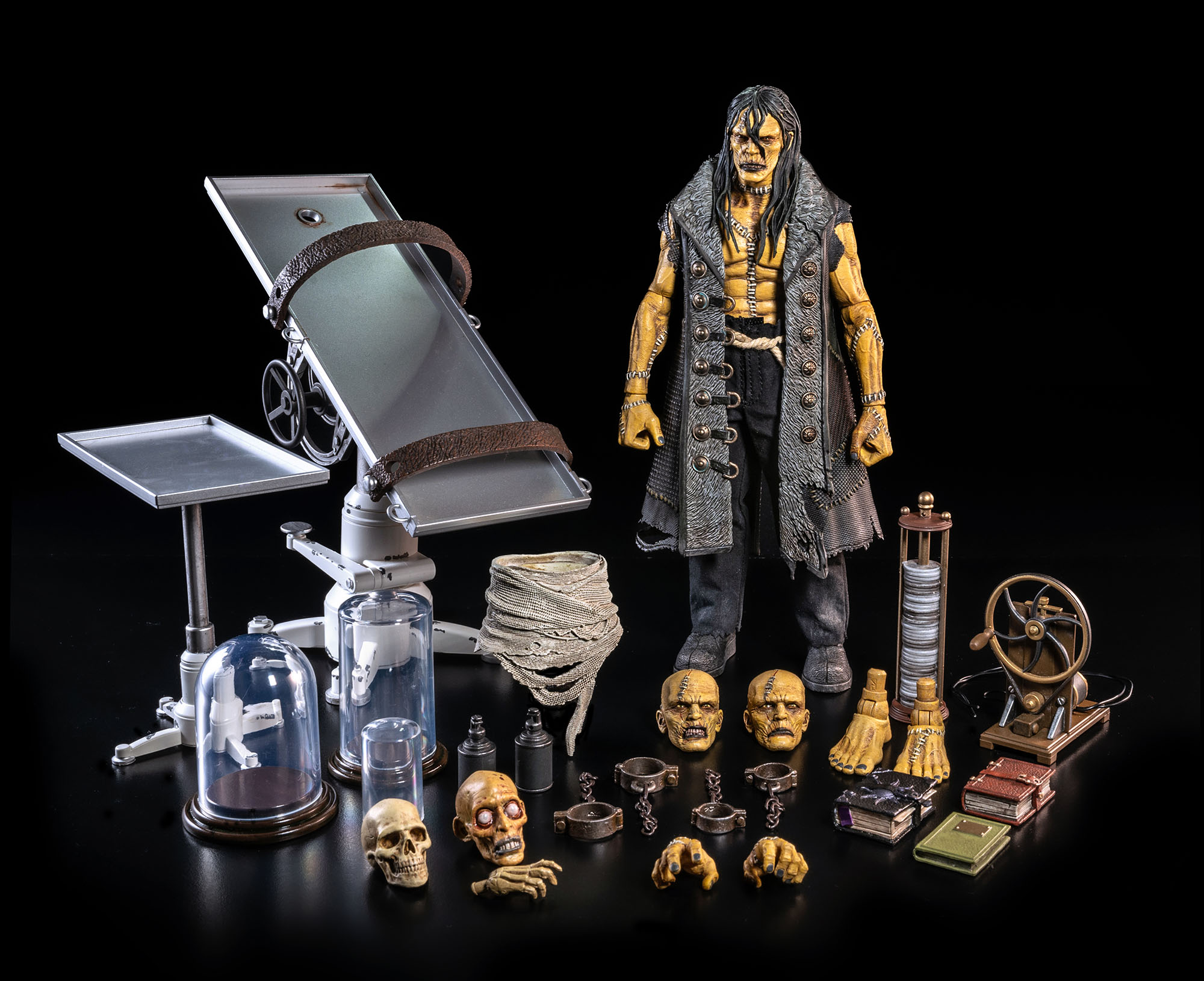
Frankenstein’s Art
As with all Figura Obscura releases, the packaging artwork on “Frankenstein’s Creature” is an important part of the release. This large set is the first Figura Obscura since The Headless Horseman to come in a different box size than what is typical for this line, and the expanded dimensions gave Nate Baertsch even more space to work with.
The front panel of the box shows the Creature fleeing from angry, torch-bearing townsfolk while the large interior section of that panel shows Victor Frankenstein’s workshop. It acts as a great backdrop for figure photos or displays!
The rest of the box is covered in scribblings and notes from the Doctor, an approach which really allows this package to stand out amongst other Figura Obscura releases. Nate wrote out every scribble and notation on those “pages” himself.
Included in the package with all of the Figura Obscura: Frankenstein's Creature figures is a small booklet like we have done with recent Figura Obscura releases. This booklet includes a bit of history on the story (much of which is repeated here in this article) along with a few key excerpts from the original text. Of course, Nate's wonderful art also accompanies this content!
The packaging art for this set was also used to create pins, tankard-style mugs, and t-shirts (plus lots of other apparel), the latter of which are offered by our partners at RetroRagsLimited.
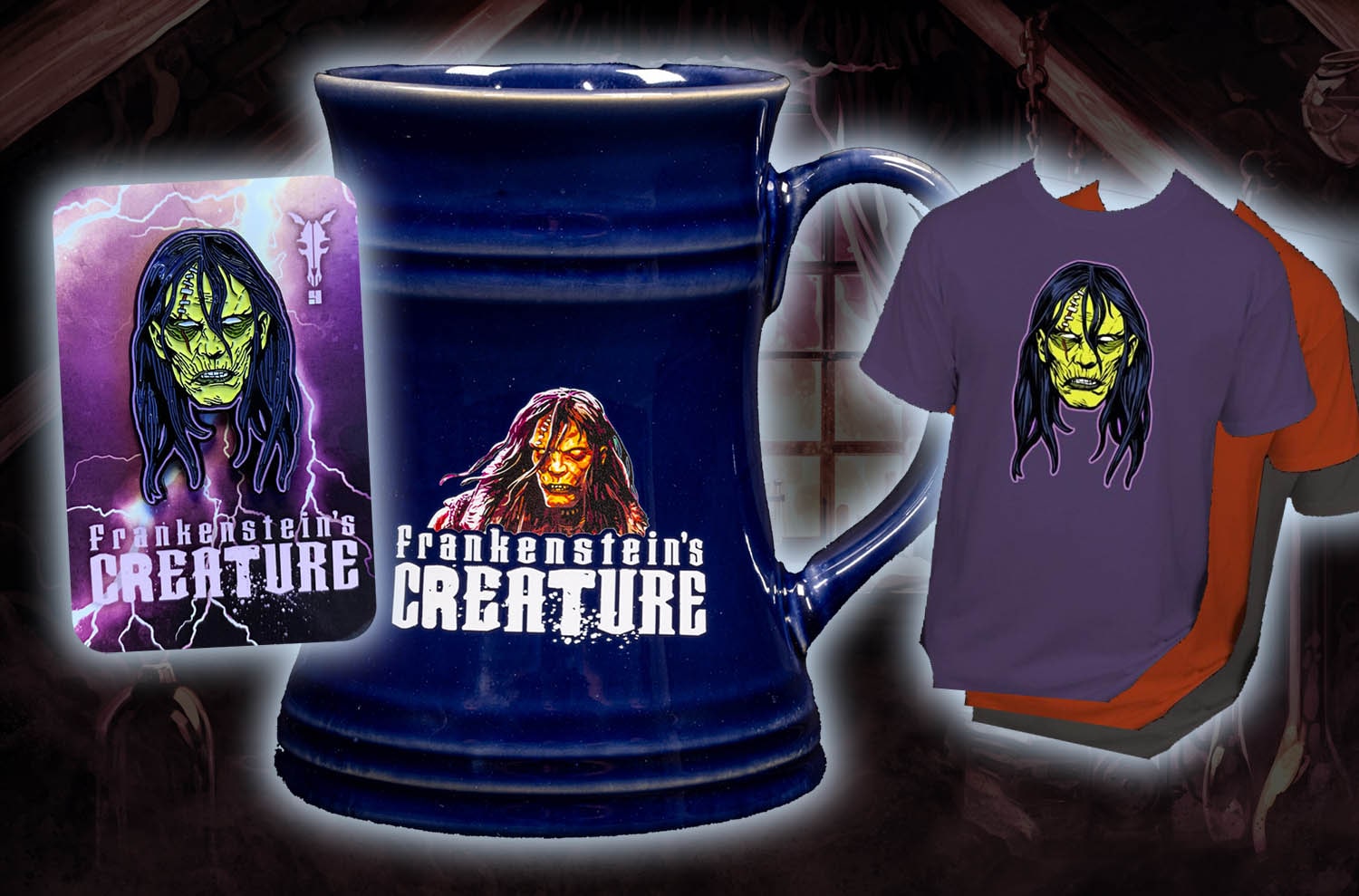
The Monster Rises
As we have done with past Figura Obscura releases, we had planned a second version of Frankenstein's Creature - and this time we were going full Monster!
The first version of this figure, the "Creature", embraced the character's description from the original text, so for the follow up we elected to embrace some of the more modern interpretations of the character and go with green skin for the "Monster." All of the parts to create the figure's two distinct looks were still included, as were the mini-diorama lab parts, but everything was presented in brand new colors as part of our "2025 Retailer Appreciation" wave. You can see an image of the green-skinned Frankenstein's Monster set below.

The Experiment Continues
What began as an idea to create “a holiday figure” a few years ago with Krampus has grown into what is arguably Four Horsemen Studios’ most unique and unpredictable line. What characters or creatures could be next in line to knock on the doors of Figura Obscura? Keep your eyes open and stay alert, for the experiments continue, and you never know when the next creation will rise!
